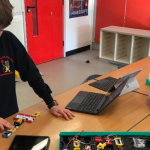Human minds are amazingly unique and endowed with unique types of learning styles. Finding out the specific type of learning style of your kids can help you understand their needs and talents. This way, you can offer support throughout their education journey for a healthy development.
The idea that there are different types of learners has been supported by myriad studies in the past century. In order to cultivate 21st century skills in kids, and to prepare them for the future, it is essential to understand their unique needs and dispositions.
What is a learning style?
Learning styles refer to different tendencies of individuals in learning. In other words, it is the idea that each person learns best when they are presented information in the way that suits their learning style. This theory has especially become prominent in scientific circles in the 1970s and greatly influenced educational approaches since then.
Models of different learning styles vary according to the components of learning they focus on. Some may include elements such as motivation and surface-deep approaches, some include social, physical, environmental aspects, and some are interconnected to personality traits (e.g., introversion or extroversion).
Different Learning Styles for Kids
Children are at the beginning of their lifelong learning. Their preferences, talents, and needs are always changing. This is important to keep in mind when thinking about learning styles for kids. It can be helpful to think about which learning style your child is closest to, and to make adjustments accordingly. However, remember that these categories are not set in stone, and life is always more complex and bigger than any categories can account for.
That being said, matched with the right strategies, learning styles can facilitate education journeys. When the strategies in alignment with the learning style of your child are implemented, it can boost motivation and make it easier for them to understand new information. Moreover, it encourages children to persist with difficult learning tasks and keep them engaged.
Parents and educators are encouraged to discover different types of learning styles and how they can accommodate the right strategies for each. Not only will this result in an increase in the levels of comprehension and metacognition of kids, but also it will significantly boost their motivation.
What are the different types of learning styles?
According to a literature review, there are around 71 different models of different learning styles. For the sake of simplicity, we will be focusing on Neil Fleming’s “VARK model” which consists of four different types of learning styles: visual learning, aural learning, reading/writing (linguistic) learning, kinesthetic learning.
Visual learning style
Those with a visual learning style (spatial learning style) tend to learn the best when they receive information through maps, diagrams, charts, graphs, colours, and other symbolic devices. Visual learners have strong perception and spatial thinking skills.
Auditory learning style
Learners with the auditory learning style prefer being presented with aural information. This means they can make the best of lectures and class interactions, discussions. They can also benefit from group work and partnered activities. Auditory learners have strong language and oral communication skills. They are usually inclined to be musical and rhythmic.
Linguistic learning style
Individuals with a linguistic (reading/writing) learning style thrive when they are dealing with written words. They tend to process information by writing notes. These individuals are practical and careful with details. They work best alone in a quiet space.
Kinesthetic learning style
Kinesthetic learning style (hands-on learning style) requires learning things by doing. Individuals with this learning style like to recreate and put into practice what they learn. Physically acting out the information and engaging in tactile processes speed up their learning.
What is Your Child’s Learning Style?
To find out the exact learning style of your child, you can consult a professional and take a questionnaire for learning style assessment.
It is also important to keep in mind that life is larger than any number of categories. Children’s skills, talents, and inclinations can vary over time. The best you can do is observe and talk to them, to figure out how you can support them the best.
Nevertheless, with reference to the four learning styles inventory by Fleming and Mills, we have curated a simple guide to give you some ideas.
Your child may have a visual learning style if they:
- Prefer to learn through patterns, shapes, and visual aids over written/spoken word
- Have an active and vivid imagination
- Are good at interpreting body language and visual data around them
- Enjoy visual activities such as art
- Have a talent for recognizing and remembering people’s faces and places they visit
- Are interested in the world and objects around them.
Your child may have an aural learning style if they:
- Recall spoken words and songs very easily
- Have a sensitivity to different tones, pitches, rhythms
- Like to “think out loud”, rather than silently brainstorming first and then speaking up
- Enjoy explaining things to others and having discussions
- Often sing, hum or talk when they are playing or working
- Ask questions often when they are working on a task.
Your child may have a linguistic (reading/writing) learning style if they:
- Write things down and take notes when they work on a task
- Enjoy reading books and creative writing tasks
- Prefer learning facts and solving problems about the real world rather than abstract ideas
- Are good at remembering what they have read
- Learn most efficiently when they write down instructions for a task
- Like to study by taking notes and writing summaries.
Your child may have a kinesthetic learning style if they:
- Excel at physical activities (sports, dancing, acting)
- Have a hard time remaining seated for long periods
- Prefer fieldwork settings or laboratories rather than traditional classrooms
- Love exploring around, engaging their five senses and touching things
- Learn best when they can connect things to concrete personal experiences, examples, real life practices
- Like role playing, narrating, using flash cards and interactive maps to learn.
No matter which learning style your child is inclined towards, they can find fun activities and lessons to suit them on Twin app! With over 1000+ interactive activities, 300+ DIY projects, mini-games and trivia, Twin offers a holistic STEM learning experience for all kids to enjoy. Find out more and start your journey today!



